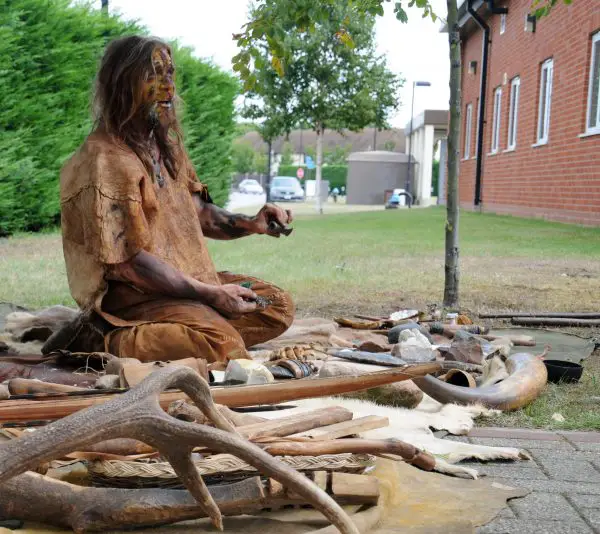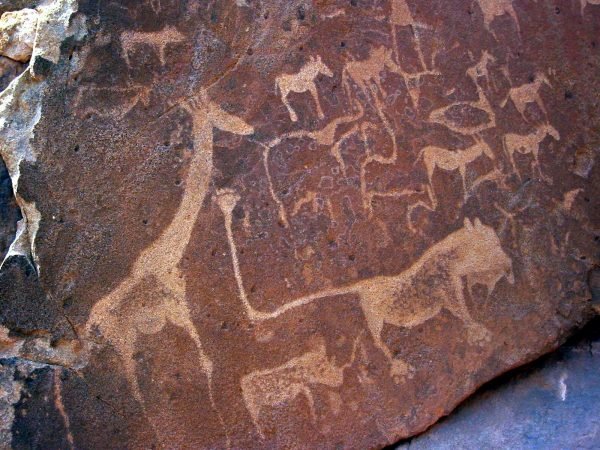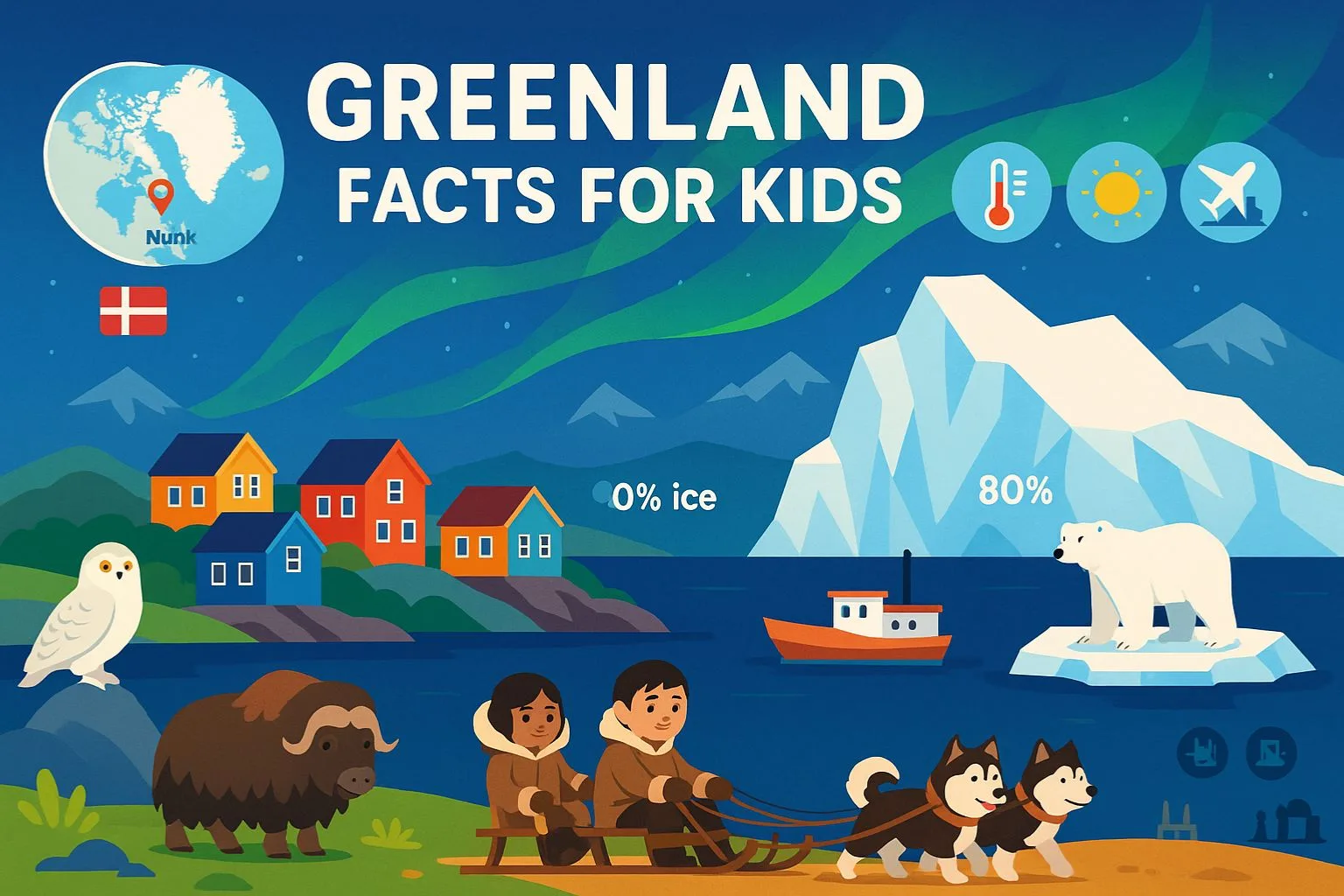Stone Age is the most interesting period to learn about in mankind’s history. We get to know how it all started for us at the beginning of human history. And when we start to think about the stone age, hundreds of questions pop out in our minds about the people of that time, how they lived, what they ate, what tools they used, about their clothes, houses, and lifestyle. Similarly for school kids, stone age is a very interesting topic to learn. We have gathered a complete set of Stone Age Facts For Kids, that will help them in learning all about the stone age. These facts about the stone age will give the kids a complete picture of the stone age.
Stone Age Facts For Kids
What is Stone Age
The Stone Age marks the earliest period in human history, characterized by the use of stone tools. This era began when humans first crafted tools from stone to aid in their survival and daily tasks. It spans thousands of years, during which the primary concerns of humans were self-protection and securing food. The Stone Age concluded with the advent of metal smelting, as communities transitioned from stone tools to metal ones, marking the beginning of the Bronze Age. This shift reflected significant advancements in technology and changes in human societies.
What does Stone Age mean
The Stone Age refers to the earliest known period of prehistoric human culture, characterized predominantly by the creation and use of stone tools. This era represents a significant phase in human development, marking the transition from simple survival strategies to more complex societal behaviors. During the Stone Age, early humans not only crafted tools for hunting, gathering, and daily tasks, but they also began to develop early forms of art, such as cave paintings, and to establish more structured communities. The period is divided into three distinct phases: the Paleolithic, Mesolithic, and Neolithic, each reflecting advancements in tool-making techniques and social organization.
Why is it called the Stone Age?
It is called stone age because of the predominant use of stone tools and weapons by early humans. During this period, the technology for smelting metal had not yet been developed, so stone remained the primary material for tool-making. This era is defined by the innovative ways early humans shaped and used stone to meet their daily needs, from hunting and food preparation to constructing shelters. The absence of metalworking skills underscores the significance of stone tools in the survival and development of early human societies.

When was the Stone Age – When did the Stone Age start
The Stone Age commenced around 2.5 million years ago, with some evidence suggesting it could have begun even earlier. This extensive period in human history is categorized into three distinct phases: the Paleolithic, or Old Stone Age; the Mesolithic, or Middle Stone Age; and the Neolithic, or New Stone Age. Each phase represents different stages of technological and social development. The Paleolithic era is noted for the first use of stone tools and covers the vast majority of the Stone Age’s timeline. Following this, the Mesolithic period reflects a transition phase with refined stone tools and early community formations. The Neolithic era is marked by the advent of agriculture, more advanced tools, and the establishment of permanent settlements.
How long ago was the Stone Age
The Stone Age began around 2.5 million years ago and concluded around 2500 BC. Spanning nearly 2.5 million years, this era encompasses significant advancements in human technology and social structures. The period is marked by the initial development of stone tools and concludes with the transition to metal tool use, which signifies the end of the Stone Age and the beginning of the Bronze Age. Throughout this extensive period, early humans evolved through various stages of technological innovation, eventually leading to the establishment of agriculture and permanent settlements.
How long did the Stone Age last
- Start of the Stone Age – 2.5 Million years ago
- End of the Stone Age – Sometime between 6000 BC and 2500 BC
- Hence, the Stone Age lasted for about 2.49 million years.
When did the Stone Age End
The Stone Age concluded between 6000 BC and 2500 BC, a period marked by significant technological advancements, including the introduction of metal smelting. This era ended as people began to smelt copper and tin, leading to the development of bronze metallurgy. The advent of bronze, a stronger and more versatile material, gradually replaced stone as the primary substance for crafting tools and weapons. This transition from stone to bronze tools and weapons is what defines the end of the Stone Age and the beginning of the Bronze Age, reflecting a major shift in human technology and cultural practices.
Stone Age Timeline
The Stone Age is a broad prehistoric period during which stone was widely used to make tools and weapons. This era is split into three major periods, each marked by distinct advancements in technology, culture, and lifestyle:
- Paleolithic Age (Old Stone Age): Spanning from about 2.5 million years ago to 9600 BC, the Paleolithic Age is the earliest and longest phase of the Stone Age. During this time, early humans developed their first stone tools and began forming basic social structures. This period also includes significant human migrations and the emergence of important survival skills like hunting and gathering.
- Mesolithic Age (Middle Stone Age): This period began around 9600 BC and ended at different times across various regions due to the staggered introduction of agriculture:
- Near East: around 9000 BC
- Southeast Europe: around 7000 BC
- Central Europe: around 5500 BC
- Northern Europe: around 4000 BC The Mesolithic Age is characterized by more refined stone tools, the beginnings of permanent settlements, and innovations such as fishing and domestication of animals. This era represents a transitional phase towards more settled lifestyles.
- Neolithic Age (New Stone Age): Marked by the advent of agriculture, the Neolithic Age saw the establishment of stable communities, the construction of homes, and the development of farming. This period generally ended between 6000 BC and 2500 BC, varying by region, with the introduction of metal smelting technologies that led to the creation of bronze tools and weapons. The end of the Neolithic and thus the Stone Age was marked by this technological shift from stone to metal, heralding the start of the Bronze Age.
Stone Age History
The Stone Age, marking the dawn of human technological development, began approximately 2.5 million years ago and can be divided into three primary periods:
Paleolithic Age:
The Paleolithic Age, also known as the Old Stone Age, was the longest period of the Stone Age, lasting until around 9600 BC. During this era, early humans subsisted mainly on hunting wild animals and birds, fishing, and foraging for fruits and nuts. Notable for the presence of Neanderthals, often referred to as cavemen, this period witnessed the creation of rudimentary stone tools. Initially, these tools were simple and inefficient, such as stone choppers, which appeared around 1 million years ago. These early tools were crafted by striking stones and pebbles to produce sharp flakes. Over time, Paleolithic humans advanced their tool-making techniques, eventually building shelters, crafting sewn clothing, and creating early forms of art and sculpture. The age came to a close around 9600 BC, coinciding with the end of the last Ice Age.
Mesolithic Age:
Following the Ice Age, the Mesolithic Age, or Middle Stone Age, commenced in 9600 BC. This period was characterized by significant advancements in human adaptation to new ecological conditions, leading to more sophisticated methods of hunting, fishing, and gathering. The tools from this era were finer and more specialized, reflecting the adaptation to a broader range of environments and food sources. The end of the Mesolithic Age varied across different regions, largely dependent on when agricultural practices were adopted.
Neolithic Age:
The Neolithic Age, or New Stone Age, began as the Mesolithic Age ended and is marked by substantial changes in human lifestyle. The most transformative development of the Neolithic Age was the shift from nomadic bands of hunters to settled communities that engaged in agriculture and animal domestication. This transition led to the cultivation of crops such as wheat and barley and the domestication of livestock like sheep and goats, fundamentally changing human interaction with the environment. Villages and permanent settlements became common, and with these, more complex societal structures developed. The Neolithic Age concluded between 6000 BC and 2500 BC with the introduction of metal tools, leading to the end of the Stone Age.
Difference between Old Stone Age and New Stone Age
Time Period:
- Old Stone Age: Began around 2.5 million years ago and ended in 9600 BC.
- New Stone Age: Started at various times following the Mesolithic Age and concluded between 6000 BC and 2500 BC.
Primary Lifestyle:
- Old Stone Age: Early humans were nomadic hunter-gatherers who relied on hunting wild animals and birds, fishing, and gathering fruits and nuts for sustenance.
- New Stone Age: Marked a shift to a settled, agrarian lifestyle with the domestication of plants and animals, leading to the development of farming and permanent settlements.
Technology:
- Old Stone Age: Utilized basic stone tools that were often simple and crudely made, tailored primarily for hunting and gathering.
- New Stone Age: Saw advancements in stone tool technology with more sophisticated designs, including tools for farming and constructing homes. This period also witnessed the beginnings of metal tool use.
Social Structures:
- Old Stone Age: Consisted of small, mobile groups that moved frequently to follow their food sources.
- New Stone Age: Characterized by the emergence of larger, more organized communities that built permanent villages and developed complex social structures.
Economic Base:
- Old Stone Age: Economically dependent on wild resources, with food sources being hunted or gathered from the natural environment.
- New Stone Age: Shifted towards an agricultural economy, with a reliance on cultivated crops and domesticated animals, significantly altering their interaction with the environment.
Cultural Developments:
- Old Stone Age: Art and cultural expressions were primarily focused on survival themes, often depicted in cave paintings and simple carvings.
- New Stone Age: Experienced a flourish in cultural developments, including pottery, weaving, and more elaborate artistic and religious expressions.
Stone Age People
During the Stone Age, several human species evolved, each contributing uniquely to our prehistoric timeline:
Tool-makers (Homo habilis):
- Meaning: “Skilled man.”
- Characteristics: Known for their nimble hands and moderately large brains, Homo habilis were the first humans to craft stone tools.
- Timeline: They lived from approximately 2.4 to 1.6 million years ago.
- Location: Predominantly in East Africa.
Fire-makers (Homo erectus):
- Meaning: “Upright man.”
- Characteristics: Homo erectus were similar in stature to modern humans and were the pioneers in using fire. They used fire for various purposes such as cooking meat, creating light, keeping warm, and protection from predators. They also had larger brains than their predecessors.
- Timeline: They appeared around 2 million years ago and were among the first to migrate out of Africa into Europe and Asia.
Neanderthals (Homo neanderthalensis):
- Characteristics: Neanderthals were robust and shorter than modern humans but were similarly strong. They were adept at making warm clothing from animal skins and fur, indicative of their ability to adapt to colder climates. Neanderthals lived in close-knit family groups, cared for their sick, and practiced burial of their dead.
- Timeline: They thrived in Europe and Asia during the Ice Age, approximately from 300,000 to 24,000 years ago.
Modern Humans (Homo sapiens):
- Meaning: “Wise man.”
- Characteristics: Originating around 200,000 years ago in Africa, Homo sapiens are noted for their large brains and slender bodies. They developed sophisticated art, as evidenced by rock and cave paintings. Additionally, Homo sapiens began agricultural practices and domesticated animals around 10,000 years ago, marking significant advancements in food production.
- Timeline: They coexisted with other human species until around 24,000 years ago, after which only Homo sapiens remained.
Learn more about Stone Age People

Where did Stone Age People Live
Stone Age people adapted to a variety of environments and their living arrangements reflected the nomadic lifestyles dictated primarily by their need to follow food sources:
Nomadic Lifestyle:
- General Habits: During the Stone Age, people generally led nomadic lives, moving from place to place in search of food. This constant movement was a strategy to optimize access to food resources such as wild animals, fish, and forageable plants.
Shelter Types:
- Caves: In regions with suitable geographical features, Stone Age people often resided in caves. These natural shelters provided protection from the elements and served as long-term camps where they could cook and consume meat. Caves also doubled as canvases for early human art, with many cave walls adorned with paintings depicting daily life, animals, and various symbols.
- Temporary Camps: In flatter, open areas devoid of natural rock formations, they constructed temporary camps. These were typically made using wooden frameworks covered with animal skins, providing quick, efficient shelter that could be dismantled as they moved on.
Permanent Structures:
- Early Permanent Homes: Evidence of more permanent homes exists in some regions, such as in Howick, Northumberland, and Yorkshire. These structures, dating back to the Mesolithic Age, indicate a shift towards more stable living arrangements. The homes were likely constructed as the availability of resources and developing technologies allowed for longer stays in a single location.
As Stone Age people progressed from the Paleolithic through the Mesolithic and into the Neolithic period, their living arrangements evolved significantly. Initially, mobility was key to survival, but with the advent of agriculture during the Neolithic Age, more permanent settlements became viable and increasingly common. This transition marks a profound shift in human history, from a life on the move to one rooted in agriculture and community-building.
Stone Age Children
Stone Age children experienced a unique upbringing that was deeply intertwined with the demands of their environment:
Diet and Health:
- Nutrition: Stone Age children consumed a diet rich in fresh meat and fruits, which were gathered from their surroundings. This diet, high in protein and other nutrients from natural sources, contributed to their robust health.
- Physical Development: The active lifestyle required for survival, including the physical tasks of hunting and foraging, helped develop strong and healthy bodies from a young age.
Early Responsibilities:
- Skill Development: Children were taught essential survival skills early in life. This education included learning how to hunt and gather food, which were critical skills for their community’s sustenance.
- Work and Play: From a young age, children participated in the daily activities of their communities. This participation was not only a necessity for learning but also a means of physical development. The line between work and play was often blurred, with children engaging in tasks that doubled as physical exercise and skill training.
Social and Cultural Roles:
- Community Involvement: Children in the Stone Age were integral to the community, often involved in communal tasks from a very young age. This early involvement helped inculcate a sense of responsibility and belonging, as they contributed to their family’s and tribe’s needs.
- Learning Through Observation and Participation: Learning was predominantly experiential, with children observing adults and participating in activities that were essential for their survival. This hands-on approach helped them gain practical skills and knowledge crucial for living in harsh prehistoric environments.
Stone Age Houses – Facts about Stone Age Houses
During the Stone Age, humans constructed various types of shelters to accommodate their nomadic lifestyles and the gradual shift toward more settled living. Here’s a look at the different types of Stone Age shelters:
Caves:
- Location Benefits: People often chose to stay near the mouth of caves where it was warmer and there was more light available. This positioning also offered protection from the elements and predators.
- Cave Art: The walls of these caves frequently served as canvases for early human art, which includes paintings of hunting scenes and daily life. Many of these artworks have been preserved and provide valuable insights into prehistoric life.
Huts/Tepees:
- Structure: These shelters were constructed with a wooden frame arranged in the shape of a tepee. The frame would then be covered with materials available in the environment, such as animal skins and tree barks.
- Mobility: Due to their lightweight construction, these shelters were easily portable, making them ideal for nomadic groups who moved frequently in search of food and resources.
Animal Bone Structures:
- Construction Materials: In environments where wood was scarce, Stone Age people innovated by using large animal bones and tusks, often from mammoths, to create the framework for their shelters.
- Insulation: The bone structures were covered with animal skins, which provided necessary insulation against harsh weather conditions.
Permanent Dwellings:
- Development of Permanent Shelters: Towards the end of the Stone Age, particularly in the Neolithic period, there was a significant shift toward the construction of more permanent dwellings.
- Materials and Design: These homes were typically built using wattle (woven wooden strips) and daub (a mixture of mud, clay, and straw) to form sturdy walls. The roofs were thatched with local vegetation.
- Settlements: These more durable and permanent structures often emerged within larger settlements, indicating a move towards agricultural societies and fixed communities.
Stone Age Culture
he Stone Age was marked by diverse cultures across different periods, each adapting uniquely to their environment and technological capabilities.
Paleolithic Age:
- Early Paleolithic: This period saw the development of the first stone tool technologies, such as the Oldowan and Acheulean cultures. The Oldowan tools, used primarily by early humans like Homo habilis, were simple pebble tools. Acheulean tools, associated with Homo erectus, were more advanced, featuring hand axes and cleavers. Early humans during this time lived in small groups, often consisting of immediate family members.
- Middle Paleolithic: Tool technology further improved during this age. Neanderthals and early modern humans crafted more sophisticated flake tools (Mousterian tools). This period also saw the beginnings of trade in raw materials and increased social behaviors, including caring for the elderly and engaging in artistic expression, such as cave paintings and personal ornaments.
- Upper Paleolithic: The cultures of this period, including the Aurignacian, Gravettian, and Magdalenian, displayed significant advancements. They developed a wide variety of tools and weapons adapted to different environments and food sources. Art flourished more broadly during this time, with evidence of sculptures, engravings, and complex cave paintings. Social structures became more complex, and there was a marked increase in the variety and sophistication of living arrangements.
Mesolithic Age:
- The Mesolithic period bridged the gap between the hunting and gathering lifestyle of the Paleolithic and the agricultural practices of the Neolithic. During this time, humans used microliths — small, finely-made tools often set into wooden or bone handles. These tools were part of more complex hunting weapons, such as bows and arrows.
- Culturally, this period saw the formation of larger settlements and the continuation of artistic expressions. Social ceremonies became more elaborate, including the burial of the dead with grave goods, indicating beliefs in an afterlife or spiritual practices.
- While some groups began to experiment with early forms of agriculture, many Mesolithic communities continued to rely heavily on hunting and gathering, adapting their tools and techniques to increasingly diverse environments.
Stone Age Hunting – How did they Hunt in the Stone Age
Stone Age hunting methods evolved significantly over time as humans developed new technologies and adapted to their environments:
Early Stone Age:
- Initial Tools: In the earliest part of the Stone Age, particularly during the Paleolithic period, humans used basic tools for hunting. They primarily employed sharp sticks or simple stone tools to hunt animals. These were rudimentary and required close proximity to the prey.
- Use of Fire: Early humans also learned to use fire, which became an essential part of their survival strategy. They used fire not only for cooking meat but also for protection from predators and to manipulate animal movements during hunts.
Development of Hunting Technologies:
- Spears and Spear-Throwers: As time progressed, Stone Age people developed more sophisticated tools, including spears. Initially, these spears were tipped with sharpened stones or later, bones and flints, which allowed hunters to engage prey from a greater distance. Some groups also developed spear-throwers (atlatls), which provided additional force and range.
- Bows and Arrows: By the Mesolithic and certainly by the Neolithic period, bows and arrows had been invented. These allowed even greater range and precision, revolutionizing hunting practices. This technology significantly impacted the efficiency and safety of hunting.
Processing and Utilization of Animal Products:
- Butchering and Cooking: Once an animal was killed, Stone Age people used finely crafted stone blades to butcher the carcass. They skillfully separated the meat from the bones and cooked it over fire, which not only made the meat tastier and easier to digest but also safer by eliminating pathogens.
- Use of Animal By-Products: Beyond meat, every part of the animal was utilized. Skins were treated and used for clothing and to make shelters, bones were crafted into tools, weapons, and ornaments, and fats were used for various purposes, including as a base for paints.
Tactical Hunting:
- Group Coordination: Hunting often required coordinated efforts involving multiple hunters. This coordination helped in tackling larger prey and in setting up strategic ambushes or driving animals into traps or confined areas where they could be more easily killed.
Stone Age Farming
The transition from hunting and gathering to agriculture marked a significant turning point in human history, leading to the development of settled communities and the rise of civilization:
Early Agricultural Practices:
- Experimental Farming: Around 8000 BC, humans began experimenting with farming by cultivating wild crops such as peas, lentils, and barley. This marked the early stages of agriculture, as people started to intentionally cultivate and harvest plants for food.
- Spread of Farming: By 3500 BC, farming had become widespread and established in various parts of the world. Communities began setting up farms in cleared areas of forests, where they could grow crops and raise animals.
Farm Settlements:
- Clearing Land: To make space for farming, early settlers cleared forests and created arable land. They built their homes surrounded by fields to facilitate easy access to their crops and livestock.
- Utilization of Resources: Wood from the cleared trees served multiple purposes, including building homes and structures and providing fuel for cooking and heating.
Domestication of Animals:
- Herds and Livestock: Neolithic farmers domesticated animals such as cows, goats, and sheep to supplement their agricultural practices. Cows provided milk and beef, while goats and sheep supplied wool, milk, and meat.
- Role of Dogs: Dogs played a crucial role in herding and managing livestock. They assisted farmers in moving and controlling their herds, ensuring efficient management of their valuable animal resources.
Stone Age Food – What kind of food did they eat in the Stone Age
The diet of Stone Age people varied significantly from the early days of hunting and gathering to the later periods when agriculture was introduced:
Early Stone Age Diet:
- Hunter-Gatherers: During the early part of the Stone Age, humans were primarily hunter-gatherers. Their diet consisted of meat from hunted animals, which provided a rich source of protein. They supplemented this with wild fruits, nuts, and edible plants, which contributed additional nutrients.
- Fishing: Fishing also played a crucial role, especially during the Ice Age when terrestrial food sources might have been scarce or difficult to obtain. Fish provided an essential source of omega-3 fatty acids and other nutrients.
Transition to Agriculture:
- Discovery of Farming: Around 8000 BC, Stone Age people began to experiment with growing crops, marking a significant shift in food acquisition strategies. This transition from foraging to farming allowed for more stable food supplies and supported larger, more permanent settlements.
- Development of Agriculture: As agricultural techniques improved, Stone Age people were able to cultivate a variety of crops. Initially, staples such as wheat and barley were commonly grown. However, maize was a later addition, domesticated in the Americas around 7000 to 5000 BC, and therefore not a part of the Stone Age diet in regions outside of the Americas until after the end of the Stone Age.
- Agricultural Villages: With the advancement of farming, large villages formed that relied heavily on agriculture. These settlements were able to support larger populations due to the dependable food supply provided by cultivated crops.
Diversified Diet:
- As agriculture developed, the diet of Stone Age people became more diverse, including a variety of grains and later domesticated animals. This diversification not only improved the nutritional quality of their diet but also the social and economic aspects of their communities.
Stone Age Clothing Facts – What did Stone Age people wear
During the Stone Age, clothing choices were primarily influenced by environmental conditions and the materials available to early humans:
Adapting to Cold Climates:
- Ice Age Conditions: The weather during the Ice Ages was extremely cold, prompting Stone Age people to develop effective clothing to protect against harsh temperatures.
- Use of Animal Skins: To combat the cold, early humans hunted animals not only for food but also for their skins. These skins were cleaned and treated to create durable and warm coverings. They cleverly utilized these animal hides by wrapping them around their bodies for insulation.
Innovations in Clothing Construction:
- Development of Sewing Tools: One of the significant advancements was the creation of needles from animal bones. These needles were used to sew animal skins together, allowing for the design of more fitted and protective clothing, which was a major improvement over simply draping the skins.
- Tailored Garments: Over time, as sewing techniques improved, Stone Age people could create more complex garments, which included items like pants, boots, and hoods, enhancing their ability to stay warm and mobile in freezing conditions.
Cultural Expressions:
- Body and Face Decoration: In addition to practical clothing, Stone Age people also expressed themselves culturally through body and face paints. They used natural resources, such as ochre and charcoal, to create pigments for decoration. This practice not only had aesthetic purposes but likely also played roles in social and ritual activities.
Technological and Cultural Advancements:
- The development of clothing in the Stone Age showcases early human ingenuity in using available resources to meet their needs. The evolution from simple skin draping to more tailored clothing reflects broader technological and cultural advancements during this period.
Stone Age Jewelry Facts
Jewelry in the Stone Age reflects the early stages of human creativity and the use of personal adornments:
Origins of Jewelry:
- Early Creations: The earliest known pieces of jewelry date back to around 75,000 years ago. These initial adornments were not just decorative; they likely held social or symbolic significance.
- Materials and Methods: Early humans used materials readily available in their environment. Shells were among the first materials used for jewelry. They were collected, pierced, and then strung together to create necklaces.
Design and Purpose:
- Simplicity of Design: The design of this early jewelry was relatively simple, focusing on the natural beauty of the materials rather than intricate craftsmanship. Over time, as techniques developed, more complex designs began to emerge.
- Cultural Significance: While primarily decorative, the use of jewelry in the Stone Age may also have served to signify social status, group affiliation, or other cultural identifiers. It could also have been used in trading, given the portability and value of such items.
Evolution Over Time:
- Diversification of Materials: As Stone Age cultures advanced, the variety of materials used for jewelry expanded to include bones, teeth, and later, metals. The choice of materials and the complexity of the items crafted from them grew as human technology and societal structures evolved.
Stone Age Cave Paintings Facts
- Painting animals on cave walls were very common during the Stone Age.
- Paintings were made deep inside the caves and not where the people lived, because flickering firelight could have created the illusion that these paintings were real animals.
- The famous cave paintings at Lascaux in France are 18,000 years old.

What kind of tools did they use in the Stone Age
- Stone or Wooden Club
- Bone Needle
- Bone Flute
- Bow and Arrow
- Hunting Spear
- Stone Axe
- Stone Knife
Learn more: Stone Age Tools
What kind of animals lived in the Stone Age – Stone Age Animals
- The humans mostly depended on hunting for food during the Stone Age.
- Many animals were roaming the forests during the Stone Age, some of which are not present today.
- Some of the animals of the Stone Age are:
- Woolly Mammoth (Extinct)
- Woolly Rhinoceros (Extinct)
- Cave Bear (Extinct)
- Hippopotamus
- Giant Dear (Extinct)
- Hyena
- Wild Boar
- Wolf
- Sheep




